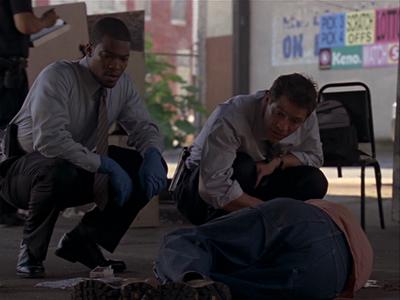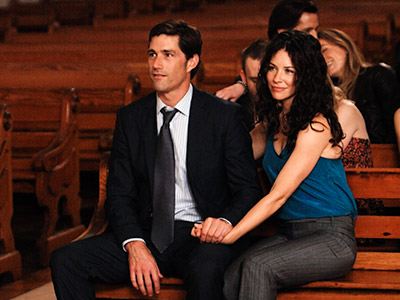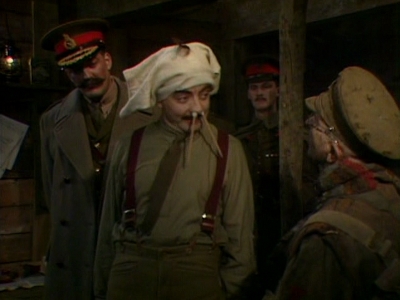The 20 Best Television Series Finales
As summer approaches, this year’s primetime television season begins its gradual wind-down with several beloved shows closing up shop for good with a much-hyped series finale.
This TV cycle alone saw the end of Fringe, Gossip Girl and 30 Rock, with the conclusions of equally beloved shows like The Office and Breaking Bad just around the corner. Unlike films, which occupy an average of two hours of our time, TV shows remain with us week after week, building up the kind of investment that’s not too dissimilar from a long-term relationship. Eventually, when it comes time for them to go, it feels akin to saying goodbye to a close friend, knowing you’ll never see them again.
And there lies the rub. After countless stories, how do you wrap up a show in a way that feels unique and organic to show’s characters and tone? The only harder thing than nursing a successful television show is brainstorming how to end it.
And while the reviled finales of Roseanne, St. Elsewhere and Quantum Leap will cause aneurysms for years to come, here we chose to take the positive route and look at some of the most moving, exciting and satisifying final episodes in television history.
20. “Chuck vs. The Goodbye” (Chuck)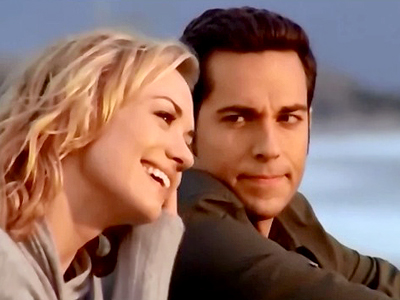
NBC’s Chuck lived under the perpetual threat of cancellation. So, when the end finally came, the writers were ready. For five seasons, our nerdy everyman accompanied sexy superspy Sarah and the grumpy John Casey on life-threatening, top secret missions. Slowly but surely, despite the obvious setbacks, Sarah and Chuck fell in love with each other. In a cruel twist of fate, however, Sarah ended up losing her memories of their relationship in the final few episodes of the show’s last season. Even after the group takes down the show’s big bad in the series finale, Chuck is left with the unenviable task of trying to bring back Sarah’s memories. Whether he succeeds in the show’s final scene is ambiguous. With Chuck being Chuck, however, one can be assured that there is always a sense of hope.
Chuck was a show that took various genres, including comedy, action, drama, and melded them all together like a blender. The thing that tied these divergent tones together, however, was the sense of boundless fun and enthusiasm that permeated every aspect of the show, from the cast’s fantastic performances (Zachary Levi deserved an Emmy for his work) to the exciting action set pieces to the dynamite soundtrack (thank you, Josh Schwartz). “Chuck vs. The Goodbye” is an exceptional demonstration of this notion, veering from action-comedy to romance without missing a beat. It’s a nice send-off to a show that only grows fonder in the hearts of fans.
19. “Focus Grill” (Home Movies)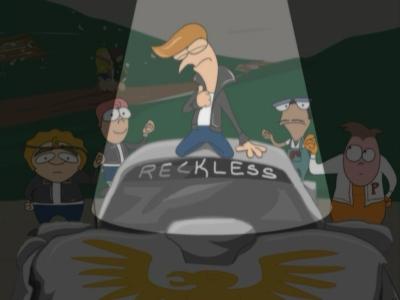
Beneath its rapid-fire torrent of improvised jokes, crude animation and ultra dry comedic stylings, Home Movies was, at its heart, the story of a young boy who turned to filmmaking as a means of coping with the chaos of his life. The central story of the episode concerns amateur filmmakers Brendon, Melissa and Jason’s quest to film a conclusion to their latest, no-budget opus. Upon filming three different endings and receiving harsh criticism for each one from their “focus group,” the three reflect over their work from the past four seasons and come at last to a conclusion that they either had yet not realized or simply choose not to vocalize: their movies are not very good. Elsewhere, Coach McGuirk’s attempts at building a grill results in a massive explosion that destroys Brendon’s beloved camera.
Though dismayed, Brendon pushes the loss to the side in favor of participating in a nearby conversation, thus relieving himself of the object that had long served as a barrier between him and the rest of the world. It’s a bittersweet note to end on, but one that nevertheless acts as the perfect sentiment for a show that both celebrated and skewered the wide-eyed dreamers of the world.
Upon confiriming that there was indeed a light at the end of the tunnel, Tina Fey and 30 Rock showrunner Robert Carlock promptly course-corrected the direction of their award-winning sitcom, which had started to grow somewhat meandering and stale in its later years. What followed was a great final stretch that saw eternally self-reliant Jack embracing single fatherhood, eternally youthful NBC page Kenneth Parcel moving on to a bigger and better job and eternally self-destructive Liz Lemon finally settling down with her very own manic pixie dream boy. All the stars were aligned for a fantastic finale and Tina Fey and company did not disappoint.
Perhaps the biggest accomplishment of “The Last Lunch” is how it milks poignancy from every scene without once betraying the show’s goofball roots. Case in point: Jenna’s farewell song (the theme from The Rural Juror) starts as a joke but—augmented by Jane Krakowski’s tearful performance—grows into a sweet little coda to the little NBC showbiz show that could. And let’s certainly not forget the hilarious subplot that has put-upon staff writer Lutz finally exacting his revenge against his colleagues/tormentors by demanding Blimpie’s as a last lunch.
After delivering two of the greatest TV seasons in history, The Wire took a bit of a step backwards in its fifth and final season. Focusing on the day-to-day lives of Baltimore’s media players, the season was still great, it just wasn’t quite Wire-great. And though the final episode saw optimistic resolutions for several of its main characters (Carcetti is elected governor, Carver is promoted, Bubbles finally cleans up his act), writer David Simon make it clear that this is not a happy ending.
As evidenced by the shot of Duckie shooting up in a dirty alleyway just like Bubbles in the old days, we as viewers are made perfectly aware that we will be leaving Simon’s city of Baltimore just as it was when we first arrived in the pilot episode six years back—a city lost in a vicious cycle of violence, drugs and corruption.
16. “The Real Folk Blues” (Cowboy Bebop)
Often revered as the Citizen Kane of anime programs, Cowboy Bebop’s highly Americanized amalgamation of Western tropes, Beat culture and William Gibson-esque steampunk made it a show for all tastes. While much of its 26-episode run consisted of individual adventures that could be viewed in any order, the show’s serialized portions built to a incredible crescendo with the two-parter “The Real Folk Blues.”
Having been abandoned by their crew, bounty hunter Spike and his partner Jet are attacked by members of the Red Dragon crime syndicate. As it turns out, the group is under the thumb of Spike’s nemesis, Vicious. After several of Spike’s friends are left dead, the two have their final confrontation. It’s a battle for the record books and, augmented by the show’s gorgeous visual style and lush musical score, stands as one of the most thrilling and intense conclusions to any show ever. If ever there was a show that transcended its niche market and achieved greatness, this was the one.
15. “Chosen” (Buffy the Vampire Slayer)
If there was ever anything that Buffy, the Vampire Slayer excelled at, it was the big finish. For seven seasons, Joss Whedon, Marti Noxon and their crew of writers carefully structured each season like a long movie, letting each episode build towards an explosive conflict with that year’s big bad. Unfortunately, upon moving from its regular home on the WB to UPN, the show lost some of its zest and the seventh season contains several of the show’s weaker episodes.
What this final year did provide, however, was an epic conclusion that rewarded those who had spent the past 143 episodes following Buffy and the Scooby Gang. “Chosen” finds Buffy, her friends and a league of new Slayers preparing for battle against the evil forces of The First, a non-corporeal entity that claims to be the world’s first evil. Despite the show’s limited television budget, the episode has all the excitement of a big-budget Hollywood blockbuster, including a culminating event that has the entire town of Sunnydale collapsing into a huge crater. The battle was not without its casualties, with several main characters losing their lives in the process, but it serves as an appropriate last stand and a hell of a final episode. Not too shabby for a show based on a (let’s face it) stupid and absurd movie.
14. “Made in America” (The Sopranos)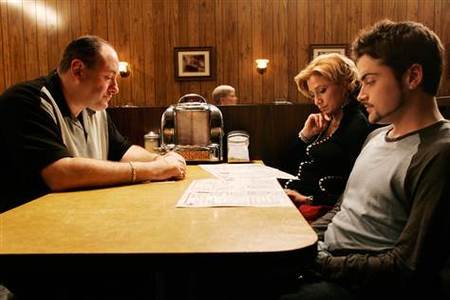
Controversy be damned. Throughout its six season run, The Sopranos both energized and enraged audiences with its playful sense of experimentation. Characters would be introduced and then promptly discareded, scenes of horrifying violence would be played as broad comedy and entire episodes would take place exclusively in Tony’s dreams. The fact that audiences expected the show’s ending to be anything approaching straightforward is enough to make one believe they didn’t watch the 85 episodes that preceded it.
Yes, the ending is infuriating but whether you believe Tony is alive or dead — according to David Chase, he’s probably not dead — those last five minutes give the audiences something they really weren’t expecting: complete empathy with the heavy-set Jersey gangster. Being the main character, there was never any chance that Tony would bite the dust before the series was over. With these final moments, however, showrunner David Chase had the audience right where he wanted them. As Tony sat down at that diner booth with his family, the viewers prepped themselves for the worst. Every person who entered the diner or even made a sudden movement was grounds for alarm. For a moment, the audience is placed in Tony’s head. We suddenly see what he copes with everyday and what’ll continue to cope with for the rest of his life — the sensation that you must always be looking over your shoulder and that death can come for you at any moment. Love it or hate it, that abrupt blackout as Meadow comes bursting into the diner is an ending that can never be replicated (nor should it).
13. “The Last Show” (The Mary Tyler Moore Show)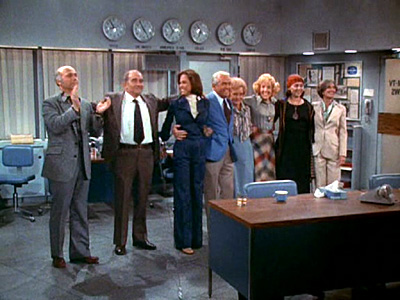
As good as Tina Fey’s 30 Rock was, it’s safe to say it would not exist if not for the pioneering work of The Mary Tyler Moore Show. In addition to breaking the glass ceiling when it came to depicting strong woman in the workplace, Moore and her writers managed to craft a sitcom that was legitimately very, very funny.
For the series finale, the writers took what could have easily been a dark premise—the station is shut down and everyone is abruptly fired—and turns it into a fun and, yes, emotional half-hour that is totally in keeping in line with the show’s goofy, light-hearted tone. The capstone of the episode is, of course, Mary’s final monologue where she details to her co-workers what it means to be a “family.” “Last night I thought, ‘what is a family?’” she begins before concluding, “they’re just people who make you feel less alone and really loved. And that’s what you’ve done for me. Thank you for being my family.” Amen, sister.
12. “The Judgment” (The Fugitive)
In the early days of television, when a show ended, there was little to no fuss made about its departure; it just kind of stopped airing once people lost interest. The Fugitive changed this notion, delivering what many consider to be the first official “series finale.” Not that the show was serialized or anything. Each episode featured mild-mannered yet resourceful Richard Kimble — a doctor framed for the murder of his wife and forced to outrun the authorities — riding into some town, finding himself in conflict with some of its residents and then fixing the situation just in time for credits to roll. It was a very episodic structure whose only connecting tissue was Kimble’s search for the “one-armed man,” the elusive figure who he claims was responsible for his wife’s murder.
After four seasons of being on the run, “The Judgement” brought Kimble’s odyssey to a thrilling close. Oblvious to the concept that a television audience would tune in week after week and become emotionally invested in a show’s characters, network execs were shocked to find that 78 million viewers tuned in to see Kimble’s final adventure. Though certainly dated by today’s standards, “The Judgement” stands as an important document in the evolution of television.
11. “Always” (Friday Night Lights)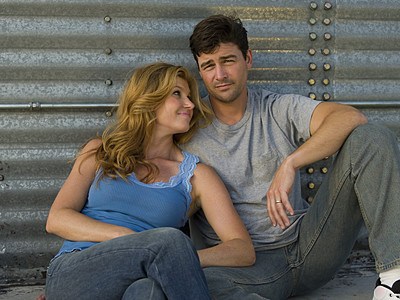
Friday Night Lights feels, in many ways, like a small miracle. Suffering from destructively low ratings in the first season and saddled with several ill-advised plot points in the second, the show would have most likely—in a less just world — faded from airways and become yet another example of a treasured, program that was gone before its time. Instead, salvation came in the form of deal with Direct TV, which allowed the show to run for three more fantastic seasons. Whereas the 2004 feature film of the same name could only caption a portion of the stories detailed in Buzz Bissinger’s celebrated book, the NBC show crafted a rich and vibrant community that felt as real and as tangible as the viewer’s own hometown. The town of Dillon, Texas was—as Vulture’s Matt Zoller Seitz famously stated—a Bruce Springsteen song brought to life.
“Always” acts as the perfect punctuation mark in the story of the Dillon Panter/East Dillon Lion coach Eric Taylor, his family (school administrator wife Tammie and bright, yet rebellious daughter Julie) and the numerous supporting characters that the Taylor family had helped or inspired along the way. It’s an emotional rollercoaster but never veers into overly mawkish sentiments. Perhaps the most telling moment of the episode, however, comes in the final act where the East Dillon Lions take the field to play their final game: the state championship. In contrast with how football games in the show were traditionally shot, director Michael Waxman films this game in a series of elliptical, abstract shots, capturing brief moments in time rather than actions. Then, when a player finally throws a potentially game winning pass, the show transitions into an epilogue showing the fate of each of its main characters rather than remaining to see the results of the game (spoiler — they won). The message couldn’t be clearer: the show always cared more for the lives and struggles of its characters than it does for football. Some may complain that this epilogue delivers resolutions for each character that are far too pat. To that I say, they were most likely making those complaints while stifling back tears. Clear eyes, full hearts, can’t lose.
Just as Friday Night Lights used football as a launching pad to tell an all-too human story, the numerous mysterious of Lost acted as a catalyst for telling a long-form story about a group of lost souls who find redemption. Yes, Jack could be a bit of a drip and Kate was all-but-useless at times, but it was how this massive, diverse ensemble interacted with one another that gave the show its heart. We may very well never know who was shooting from the outrigger from the in Season Five, Episode Four, but if mysteries were all Lost had going for it, it would have dropped off the face of the earth well before its first season concluded. Rather, what Damon Lindelof and Carlton Cuse did was to create a vast world filled with intrigue and mythology and populate it with characters whose conflicts you identified with and whose stories created emotional resonance.
With its straightforward title, “The End” works as both the climatic showdown between good and evil that the show had been building to and a gut-wrenching look into what it really means to be a hero. Along with regular scene-stealers Michael Emerson, Terry O’Quinn and Josh Holloway, Matthew Fox deilivers a fantastic performance that more than earned him his sole Emmy nomination for the show. One can complain about the pool of light that serves as the Island’s big MacGuffin but, honestly, would any answer have been more satisfying? Add in the rainy fistfight between Jack and Flocke (Fake Locke) and the wrenching final scene where Jack prepares for death as Vincent the dog arrives to comfort him (Michael Giacchino’s score makes it all the more potent) and the finale more than makes up for the show’s occasional misdirections (cough—”Stranger in a Strange Land”—cough). From the first shot of Jack’s opening eye to the final shot of his eye drawing closed, Lost was a show that took chances and respected its audience’s intelligence. There was nothing like it on TV before and there very well may be nothing quite like it ever again.
9. “Family Meeting” (The Shield)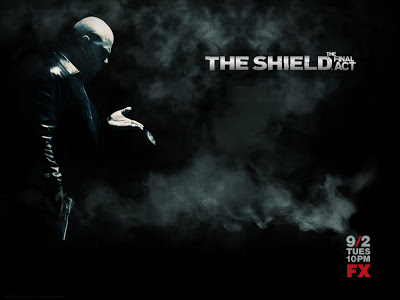
Things were never destined to end well for corrupt vice cop Vic Mackey. In the show’s penultimate episode, Vic had confessed his crimes in an attempt to gain immunity from the ICE. The remainder of “Family Meeting” deals with the fallout of that confession. Losing both his friends, job and family, Vic is confined to a mind-numbing office job.
In the show’s final scene, as he sits impotently behind his desk, Vic hears sirens and watches as police cars roll out in response to a call. After a moment spent looking at pictures of his children and meditating on the direction his life has taken, Vic reaches into his desk, pulls out a concelead gun and proceeds to walk out of the station as clips from the show’s seven year history flash by. Where he’s going and what he’s to do is never shown.Nevertheless, it’s an appropriate last image of Vic and an ideal cap-off to a show that broke the mold for what a cable show could be by never giving us the easy answers. Vic Mackey may have been a horrible human being, but dammit if he wasn’t the personification of a badass.
8. “Flip” (The Larry Sanders Show)
Long before shows such as Entourage and Extras tried their hands at Hollywood satire, The Larry Sanders Show provided the mold for how such a show should be run. Casting co-creator Garry Shandling as the titular character, an arrogant, insecure talk show host struggling to deal with the behind-the-scenes madness of his show, Larry Sanders aimed for more lofty ambitions than simply casting Hollywood celebrities to play heightened versions of themselves; rather, it posited itself as a kind of metaphor for how everyone must hide behind the mask of a public persona. While Larry, his guests and his perpetually needy sidekick Hank Kingsley are all smiles when on-camera, tension, hatred and jealousy spew forth the moment the show cuts to commercial. Despite the drama, however, the show was Larry’s life and one got the sense he would be go crazy without it.
Yet, that’s exactly what happened. After witnessing his show being slowly taken over by a pre-Daily Show Jon Stewart (playing a coked-up version of himself), Larry decides to preempt future changes and end his show. “Flip” is the story of that last show. Like everything else in the history of the program, nothing goes quite according to plan. Guests get into a fist-fight backstage, disgruntled former employees turn up to poke at old wounds and an unexpected cameo by Jerry Seinfeld cuts off Hank’s well-meaning thank you speech to Larry. It all boils down to Larry’s closing monologue, which truly demonstrated how much Shandling had grown as an actor in those six seasons. “I don’t know what I’m going to do without you,” Larry (and, most likely, Shandling) says to his studio audience before stifling back what appears to be a sob. Of course, this reaction turns out to be the result of something else entirely, but it’s a lovely image nonetheless.
7. “Office Christmas Special” (The Office)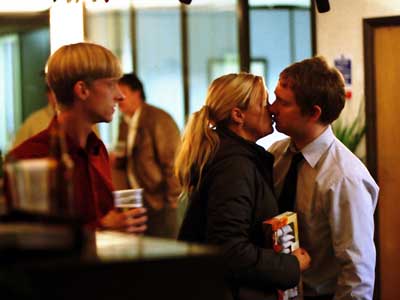
In the wake of NBC’s Office remake standing as a beacon of successful broadcast programing, it can be easy to forget just how abrasive, mean-spirited and flat-out unpleasant the original, British The Office could be. Never were the show’s callous tendancies more on display than in the Season Two finale. In the episode’s devastating (albeit hilarious) final five minutes, office manager David Brent is fired while wearing a very embarrassing costume while lovestruck Tim—in a last ditch effort—confesses his crush to departing secretary Dawn, only to have her rebuff him and move to Florida with her douchebag boyfriend.
A year later, the Christmas special, which acted as the show’s de facto finale, appeared to be going in a similar direction. Brent is still unemployed and desperately clinging to the tiny morsel of fame that the Office documentary has afforded him, Dawn is still in a miserable relationship and Tim has been forced to move back in with his parents. Then, at the 11th hour, the show throws the audience a bone and allows its characters to find some form of happiness. After finally realizing that Tim has always been her major source of emotional support, Dawn returns to the office where the two finally kiss while Yaz’s “Only You” plays over the loudspeaker. Furthermore, in perhaps his biggest victory of all, the desperate-to-be-loved Brent both secures a date with a lovely woman and finally manages to get an authentic chuckle out of his Office mates. Granted, it causes him to turn his head during the office picture…but still.
6. “All Good Things…” (Star Trek: The Next Generation)
Star Trek: The Next Generation had a lot to overcome in its first couple of years. Besides having to live in the shadow of its legendary predecessor, the show suffered through a admittedly poor first season before finally finding its footing in year two. Subsequent episodes would deliver countless hours of entertaining and thought-provoking science-ficion, particularly with the addition of future Battlestar Galactica showrunner Ronald D. Moore in season three. Moore would later reach a high enough position to co-write the series finale with Brannon Braga. The episode in question concerns a confused Captain Picard who finds his mind shifting back and forth in time from the present to seven years in the past to 25 years in the future. Picard soon learns that this is the result of a massive anomaly that must be destroyed before it consumes all of space and time.
In the world of sci-fi television (hell, television in general), “All Good Things…” is a perfect finale, with the time anomaly allowing long-departed characters such as Tasha Yar to return as well as affording the opportunity to see the character’s futures. In the end, the past, present and future collapse into a glorious bit of, to quote Doctor Who, Wibbly-Wobbly Timey-Wimey mechanics. The episode ends with Picard, now aware of the precious little time he truly has with the people he loves, stepping in to play cards with his fellow crewman. It’s a pitch-perfect ending to a great sci-fi show. Now if only we could erase a few of those Next Generation-centered movies from the timeline…
5. “One for the Road” (Cheers)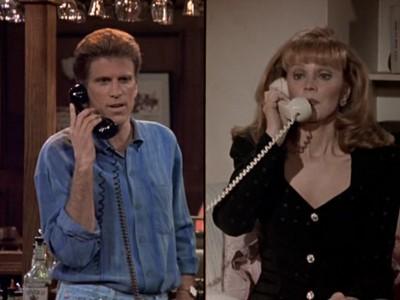
As is the case with any long-running show, Cheers’ ending did not please everyone. Indeed, The New York Times called it “overly long and uncharacteristically labored” while Variety dubbed the final 30 minutes “limping.” The fact that everyone’s beloved TV couple Sam and Diane failed to end up together did not help matters. Yet, as is the also the case, with enough distance comes re-evaluation.
On its surface, there is nothing particularly game-changing or special about “One for the Road.” It’s a standard sitcom finale, with some characters making big leaps in their lives while others remain exactly in the same place they were. The brilliance, rather, is all in the execution, from the always crisp writing courtesy of show creators Glen and Les Charles to the electric chemistry of a cast giving it their all to the tear-inducing final scene where Sam informs a late-night patron that “we’re closed.” Twenty years later, Cheers stands as the paradigm of what all network sitcoms must aspire to.
One of England’s finest exports, Blackadder’s four seasons centered on the idea of taking a group of characters and placing them into different time periods in England’s storied history. While their names and circumstances may be slightly different, the characters would retain the same personality. Rowan Atkinson was always Blackadder, the mean and two-faced misanthrope who never saw an opprotunity he couldn’t exploit or a situation he couldn’t play to his advantage. Tony Robinson was always Baldrick, Blackadder’s simply-minded lackey prone to claiming that he had a “cunning plan.” The final season, entitled Blackadder Goes Forth saw the show’s title character (this time taking the guise of army captain Edmund Blackadder) and his co-horts cavorting in the foxholes of WWI. Like M*A*S*H, however, the show paid tribute to its time period and the men who bravely gave their lives in service to their country. This was particularly the case with “Goodbyeee.”
Taking a plotline straight out of Stanley Kubrick’s exceptional anti-war film Pride and Glory, the episode centers on the characters’ final hours before embarking upon a suicidal charge on the Western Front. In a desperate attempt to avoid his assured death, Captain Blackadder tries to pretend he has gone insane. His actions, however, fail to secure him a way out. Eventually, Blackadder finds himself standing alongside his comrades and, in a moment of rare compassion, wishes them a sincere good luck. The group then charges out of the foxhole in slow motion and into the sound of machine gun fire. Then as a dirge-like piano version of the Blackadder theme plays, the final shot of no man’s land gradually transitions into shot of a serene poppy field.
3. “The Last Newhart” (Newhart)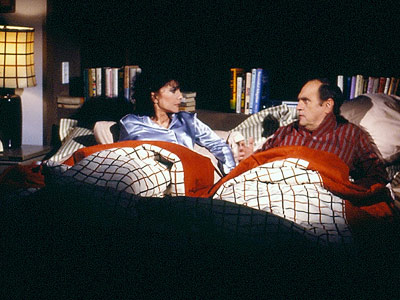
One could make a very strong case that the series finale to Newhart has effectively eclipsed the show itself. The gist of the final show finds main character Dick Loudon’s town being purchased by a Japanese tycoon who plans to tear down Dick’s rural inn and turn the area into his golf course. While the other townfolk gladly give in after a huge payment, Dick holds his ground. Five years later, Dick and wife Joanna are still living in the inn and tormented by the sounds of golfballs from the course constantly hitting the walls. To make matters worse, the couple are visited by their former neighbors, who are now all prosperous and obnoxious. Unable to take it any more, Dick storms out the door and is promptly knocked unconscious by a rogue golf ball. The show then cuts to Dr. Robert Hartley from Bob Newhart’s previous high-profile sitcom, The Bob Newhart Show awakening from a bad dream next to his wife. That’s right, the entire eight seasons of Newhart were merely a dream.
So, yeah, leave it to a Bob Newhart show — of all things — to pull off what is undoubtedly the most meta plot twist in TV history. Take that, Community.
2. “Everyone’s Waiting” (Six Feet Under)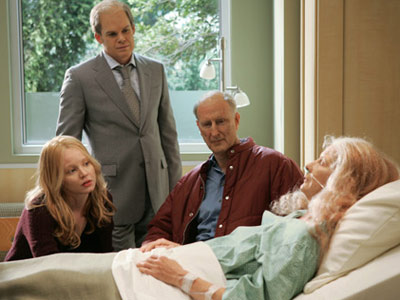
Like most Alan Ball-produced properties, Six Feed Under proved to be wildly inconsistent, with the quality ebbing up and down from season to season. When the show was on, it was among the best television dramas of all time. When it wasn’t, it could be a muddled, tonally confusing mess. As the series reached its conclusion, however, Ball brought a greater focus to the proceedings, which culminated in the shocking death of central protagonist Nate Fisher.
Despite the show’s numerous flaws, few will deny the emotional gut punch that is the final ten minutes of “Everyone’s Waiting.” As the Fisher’s black sheep Claire says goodbye to her family home in California and gets in her car to travel to a new life in New York, she catches a glimpse of the ghost of Nate in her rearview mirror. What follows is the music montage to end all music montages. Over the beautiful strands of Sia’s “Breathe,” the narrative does a flash forward, capturing the moment that each main character will die. Some are natural (Ruth), some are tragic (Keith is killed in a armored car robbery) and some are hilarious (Brenda literally dies of boredom from listening to her brother complain). The real kicker, however, is how Alan Ball juxtaposes these images against the visual of Claire’s car driving down a neverending highway on its way to New York. Six Feet Under sold itself as a show about big issues; namely, it dealt with the concept of one’s own mortality. Here, without one word of dialogue spoken, this montage both acknowledges the inevitable approach of death while also acting as a celebration of the beauty of being alive.
1. “Goodbye, Farwell and Amen” (M*A*S*H)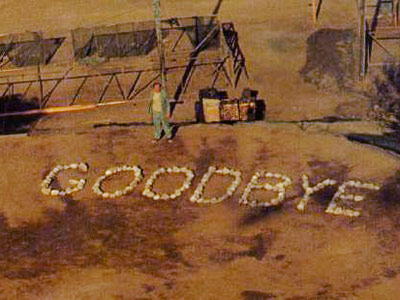
War is hell. No one knew that more than the men and women of the 4077th M*A*S*H. For characters like Hawkeye and Trapper, their gallows humor was an ultimate survival tool. Without an ability to cut loose and crack wise, one gets the sense that many of M*A*S*H’s characters would have curled into a fetal position and never stopped crying. As the show evolved over the course of 11 years, it’s tone eschewed the more sitcom-y elements and embraced a more dramatic, darker side that explored the true consequences of war. Yes, some of the the materiel was preachy, but it was well-written preachiness.
Looking back, the most astounding thing about “Goodbye, Farewell and Amen” is how expertly it weaves together all the different guises that had characterized M*A*S*H over its numerous seasons. The light-hearted banter is still there, but anchoring the whole episode is Hawkeye’s mental breakdown, an event stemming from a devastating experience involving a woman on a bus and her loud “chicken.” Furthermore, the moment that Hawkeye departs the site in a helicopter only to see Hunnicut has spelled out “GOODBYE” with the rocks below, remains as perfect a closing image as has ever been seen on TV.
GET PASTE RIGHT IN YOUR INBOX
The best music, movies, TV, books, comedy and more.

